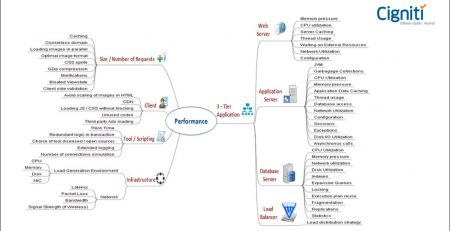How Performance Engineering helps tackle Digital Transformation challenges
In 2020, your business is either digital or it is practically non-existent.
Digital presence has become the key to survival in the current situation. Evidently, organizations of all sizes across the world have accelerated their pace of digital adoption.
Irrespective of their understanding and outlook toward digital transformation in the pre-pandemic era, every organization has now understood the indispensable need for having digital capabilities.
Although organizations are speeding up their digital transformation initiatives by investing in the trending technologies and relevant tools, they are not paying enough attention to the performance side of things.
While digital is a survival-requisite, excellent performance of the digital applications is a necessity for business resilience, reputation, and ROI. If an application has stunning UX and boasts of innovative features, but lacks on the performance scale – it is bound to fail. Consequently, the business will lose customers and will have to face a fatal blow on its standing in the market and among the end users. So much so, that the customers won’t trust them easily in the future either. Therefore, a lot depends on how well or how poorly an application performs.
Digital transformation might be the front-facing need of the hour. But, performance is the driver that will ensure success of any organization’s digital transformation efforts.
Challenges related to Digital Transformation
In addition to offering the capabilities to stay in business, digital transformation also allows organizations to deliver their offerings at high speed. Amidst the unprecedented events that have been taking place since the beginning of the pandemic, customer demands have evolved rapidly while their patience levels have decreased considerably. In order to get some level of stability, certainty, and control, customers are investing their trust in only those organizations’ products & solutions that rank high on all the parameters of performance, design, usability, accessibility, resilience, security, among others.
In the frenzy to deliver their offerings to the end users at high speed, organizations often fall short on the qualitative aspects. Today, speed is important but so is quality. End users are not looking for warp-speed feature deliveries. Rather, they are looking for products from which they can derive value.
Digital transformation is bringing along the benefit of speed, but organizations need a more efficient and robust practice for addressing quality issues – Performance engineering!
Performance engineering can help organizations in tackling the technical and business challenges that digital transformation may present. Some of the key challenges related to digital transformation are:
- Misalignment between the overall business goals and digital transformation efforts
- Lack of the culture necessary to propagate the practice of high-quality, high-speed releases
- Inadequate knowledge and absence of right skills to effectively use, manage, and monitor the modern technologies implemented for digital transformation
For bringing about digital transformation, organizations are implementing technologies like multi-cloud and edge computing. Such technologies have the caliber to enhance efficiencies, accelerate releases, and fulfill the promises of a typical digital transformation scenario. But, the catch here is to implement them right, otherwise they would add up to another expensive failure.
The performance engineering perspective for digital transformation
The first question arises is why performance engineering, and not performance testing?
Performance testing evaluates an application at the end of development on various parameters of responsiveness, availability, and scalability. While performance testing is a critical aspect of the overall QA practice, it is not sufficient. Running the performance test scripts at the end of a cycle may uncover critical performance issues, but by that time, organizations have already lost precious time, efforts, and resources. Reworking on those issues is necessary to deliver a high-performance, high-quality application, but that would also require the investment of additional time and resources. This results in increased costs and lower ROI.
Performance engineering, on the other hand, is a Quality Engineering perspective. This involves shift-left of performance testing, which would result in an end product that has been engineered strategically to perform excellently on all the parameters. Right from the design stage, through development, and final release, performance is actively considered and consciously integrated into the application. Doing so enables organizations to deliver a product that satisfies all the performance-related needs of the users, while guaranteeing high customer satisfaction, controlled costs, and desired ROI.
With performance engineering in digital transformation, organizations can successfully offer the triple benefit of speed, quality, and performance without compromising on either of them.
Cigniti and Neotys are coming together for our next webinar on – “Role of Performance Engineering in addressing Digital Transformation challenges”, in which you will learn:
- How to address the challenges of digital transformation by switching from performance testing to performance engineering
- How to adopt new methodologies, control new environments (e.g. multi-cloud, edge computing)
- How to automate API testing within CI pipeline, while accelerating end-to-end application testing.
Register to save your spot and learn directly from the experts.
Cigniti and Neotys have a long-standing partnership in which we have helped several organizations across industries improve their application’s performance. Schedule a discussion with us to learn how we can help you as well.





Leave a Reply